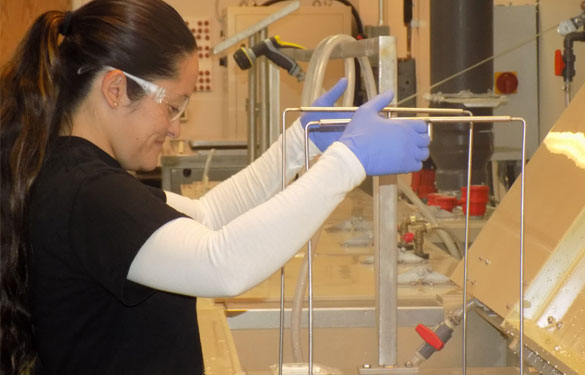Type II Anodizing (DOTIZE®)
Enhanced oxide coating for titanium based trauma and spine fixation devices intended for temporary implantation.
Technology
Anodizing Type II, DOTIZE® modifies the biological and biomechanical properties of devices.
Since 1998, DOT has been conducting anodize type II operations (DOTIZE®) compliant with AMS-2488, Anodic Treatment – Titanium and Titanium Alloys Solution pH 13 and higher. The technique utilizes an electrochemical process to artificially enhance titanium’s oxide layer thickness by several orders of magnitude (i.e. from angstroms to microns).
The main effects of type II anodizing are an increase in lubricity (anti-galling), an improvement in the fatigue strength, formation of a barrier layer against ion release, enhanced abrasion resistance, and a resistance to galvanic corrosion. Furthermore, research and historic practice has shown that type II anodizing appears to suppress bone growth onto the surface. This effect may reduce the complications related to the removal of trauma implants (e.g. bone nails and screws).
The main effects of type II anodizing are an increase in lubricity (anti-galling), an improvement in the fatigue strength, formation of a barrier layer against ion release, enhanced abrasion resistance, and a resistance to galvanic corrosion. Furthermore, research and historic practice has shown that type II anodizing appears to suppress bone growth onto the surface. This effect may reduce the complications related to the removal of trauma implants (e.g. bone nails and screws).
The DOTIZE® procedure conforms to the standard AMS 2488 (Aerospace Material Specification).
Sample devices with a strong history of anodize II utilization:
- Bone screws
- Intramedullary nails and rods
- Dynamic hip lag screws

Improving implant performance through titanium anodizing
Proven implant coating since 1998.
Anodized surfaces for trauma, spinal fusion, joint replacement and dental components
Anodized surfaces for trauma, spinal fusion, joint replacement and dental components
Customized Surface Processing:
DOT will partner with your R&D team to develop customized surface designs for your specific device application.
